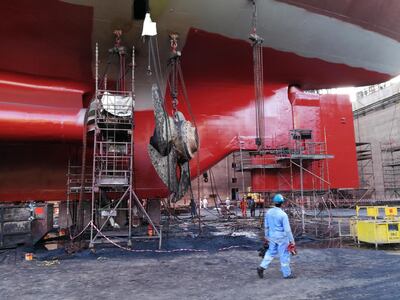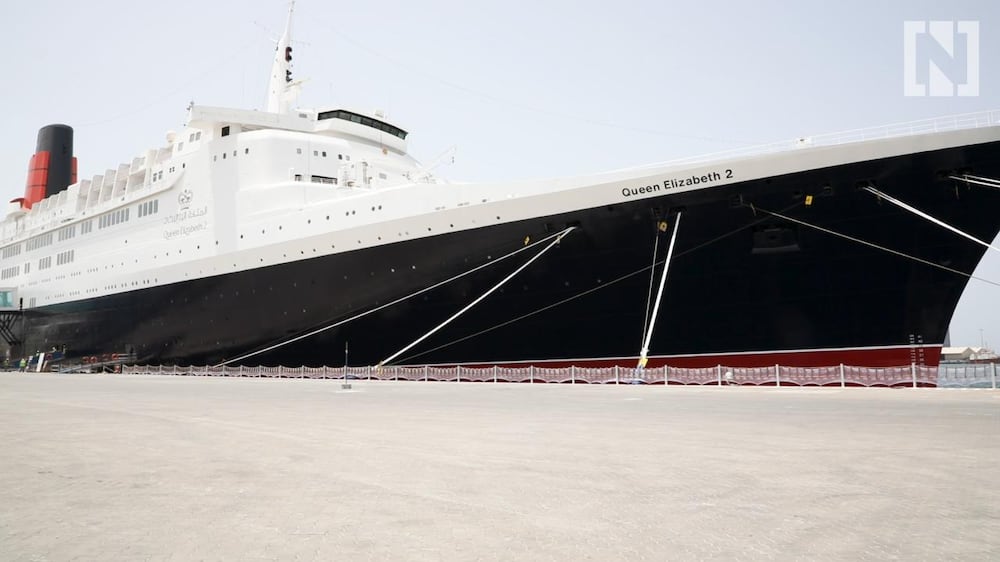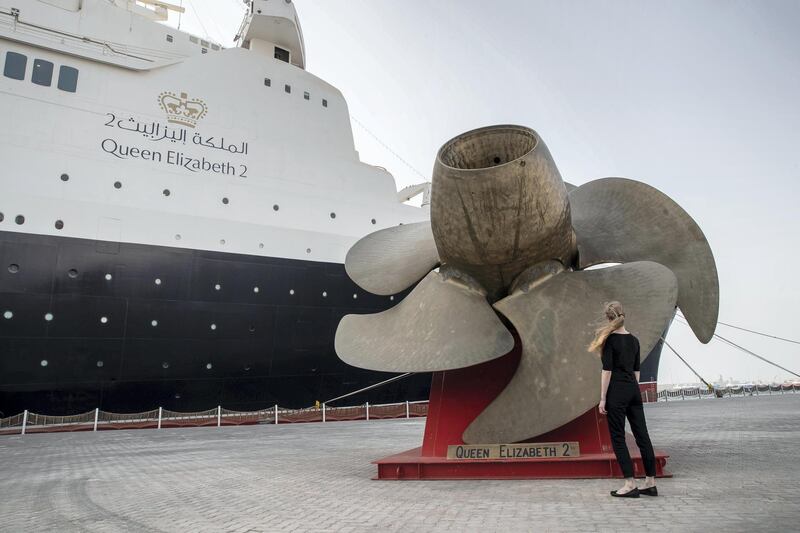It was the driving force behind one of the fastest ocean-going liners the world has seen.
Now one of the QE2’s mighty propellers has been installed beside the famous vessel in Dubai's Port Rashid.
Made of copper, it weighs 40 tonnes and has five-blades. A person standing underneath is dwarfed by its 5.8 metre span.
Mounted on a red base with the Queen Elizabeth 2 logo written underneath, the propeller was unveiled quayside at Port Rashid on August 5.
It comes as the former flagship of the Cunard Line will in October formally launch as a floating hotel.
"There was a lot of work involved," a QE2 representative told The National.
"It took six days to remove the propeller, it was then trucked to the port, craned onto the quay, polished and bolted to the dock.
“Having the propeller on the quayside makes it very clear that she is not moving anywhere,” she said.
The old cruise terminal where QE2 is now permanently based has also been turned into a museum documenting the rich history of a liner that is redolent of a glamorous era on the high seas. The installation of the propeller adds to that.

Both propellers were installed in 1988 when the liner was converted from steam power to diesel. They were made by Dutch firm, Lips and the now more-efficient QE2 would serve another 20 years for Cunard before being sold in 2007 to Dubai in a $100m deal.
But the 2008 recession scuppered plans to turn her into a floating hotel off Palm Jumeirah. Years of uncertainty followed but the vessel was quietly restored in Dubai over the past two years. Lifeboats were removed, rooms revamped and the liner was fixed to the dock for its soft launch in April as a floating hotel. The work cost about US$100 million (Dh367.25m) and took at least 2.7 million man hours. Inside many of the classic features remain. Hamza Mustafa, chief executive of PCFC Hotels, QE2's new operators, said the retro look is its chief selling point. "You've walked into a time capsule. This is QE2 during her heyday," he said.
Peek inside the newly renovated QE2

The QE2 Story, a website run voluntarily by enthusiasts of the liner and unconnected to the current operators, has more details.
“The propellers carried QE2 approximately three million nautical miles - much of it at high speeds of around 29 knots. Her original propellers [1967 to 1986] took her 2.6 million miles.”
QE2 was built in the shipyards of John Brown in Clydebank, Scotland and the 293.5 metre vessel had completed more than 800 Atlantic crossings by the time Dubai entered the picture. The ship could reach a top speed of 34 knots following its conversion from steam to diesel – faster than many of today's vessels.
QE2 had three sets of propellers. Along with the set now in Dubai, two were made for her launch in 1967. When the ship underwent the conversion in the late 1980s, one of these sets were turned into golf clubs. Some of these crop up at auction houses to this day.
_______________
Read more:
Historic ocean liner QE2 to open as a floating hotel in Dubai this month
QE2 undergoes major facelift in Dubai as anticipation for her next chapter builds
With the quintessential QE2, Dubai hotels continue to enthrall







